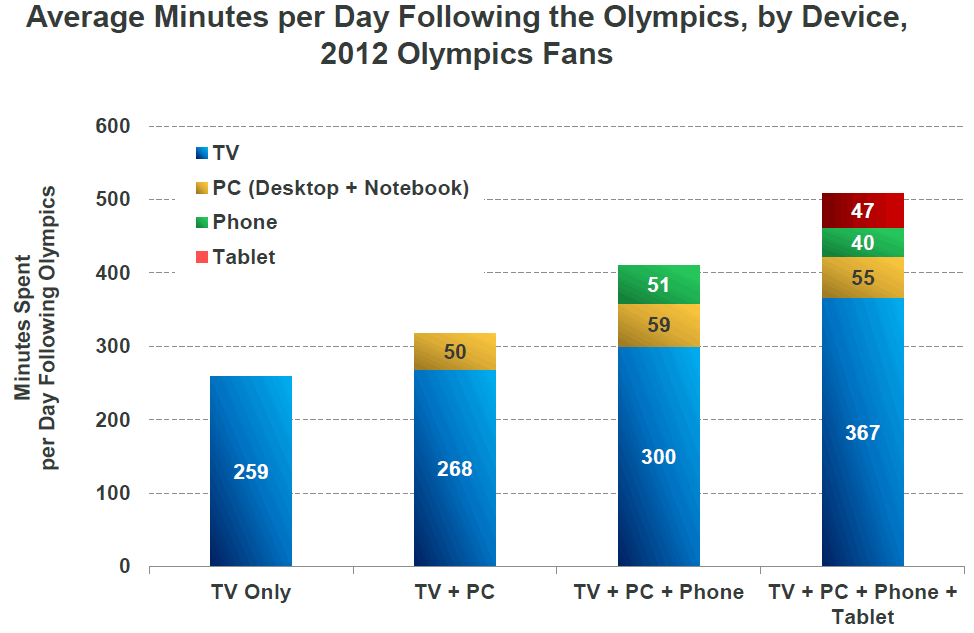It’s that time of year, when a barrage of free statistics come at you from Mary Meeker at Kleiner Perkins Caufield and Byers (KPCB). The Internet Trends report is undoubtedly one of the most influential reports out there – and hey, it’s hard to beat free. But what does this all mean for you as an app developer? We’ve looked at it with the eye of developing an app business, and it does indeed look very good.
Mobile usage up = more of everything
The report points to that on a global basis, mobile usage accounts for 25% of the overall consumption of content on the web. For Asia and Africa, this is well over a third:

In some markets, especially Western markets, this is somewhat driven by a massive growth in tablets, and globally there are more than half of many tablets shipped as laptops. For a mobile app developer this is an opportunity and a challenge. It’s an opportunity because the massive growth will support a huge explosion of app sales – it’s a challenge because it means you are increasingly managing a global business and one that is fragmented on device sizes (big vs small screens) and business models.
Mobile app revenue > mobile advertising revenue
KPCB pegs paid revenue as 69% of the mobile app monetization. This is good news in two ways:
1) People paying for your product means there is an appreciation and willingness to pay, and a current view on mobile content as being premium. This means cable is beating network TV. For now
2) The fact that mobile advertising is so low is encouraging, because there is a huge gap in ad spend online vs mobile when you compare to total usage:

This implies of course that there is a huge amount of dollars that should be spent on mobile, which presumably means more advertising revenue available for everyone.
TV = Smart + Multi-screen
We’ve previous mentioned that a huge app battle ground to come will be your TV. This can mean apps and app stores tailored for Smart TVs, or it can mean apps that are designed to work in and around TV content. Data from the 2012 Olympics showed that users who also watched while using their app were much more engaged overall:

The merging of TV with other platforms has many implications for app developers. Not only can you create apps that take advantage of TV content (whether it’s quiz games based on content, interactivity/social with something live on TV, etc), but you can easily see TV as an engagement or discovery channel for your app. It is not farfetched that users soon will among an apps permissions say they allow your app to track what you are watching on TV and send notifications to the TV screen. So for instance when you are watching sports, you are reminded you have a really cool football game on your phone – at a time when you are possibly more likely to fire up the app. This can help not only app engagement and usage, but also discovery, as you could easily see where TV real estate could be used for personalized ads or peer to peer recommendations (i.e. learn which app your friends are using while watching the Olympics in real time on the screen, similar to what Spotify uses Facebook for now). This is all coming in the not too distant future.
There are also some really cool cross platform plays spanning TV, mobile and PC that have been successfully rolled out. One of our favorites is Wie is Tim :
This particular concept showed that 1 in 6 of the TV viewers downloaded the app. There were more than 280,000 downloads and it achieved #1 position in the iTunes store and #8 worldwide. On its series return GTST saw a 25% rise in audience share on television.
Now this type of content is not common place yet, due to fairly high costs compared to just producing an app or a single channel experience, but the level of engagement is simply amazing. And as in anything, costs are increasingly coming down thanks to companies like The Project Factory and their Appisodic Platform, which means soon we will get more holistic entertainment experiences utilizing every device.
China = Big. Really big.
It’s kind of been something most people know – the fact that China is growing and becoming a huge tech market. But the fact that 4 out of 10 of the world’s busiest sites are Chinese is staggering:

One can only being to fathom how big this is when looking at handset makers Xiaomi’s sales record on singles day (equivalent to black Friday): 200.000 handsets sold in 3 minutes. On the same day, Alibaba’s T-Mall retailed for $1 billion in 50 minutes.
What does it mean for a developer? Well, you may start thinking of how you can play in this market. We are, and if you are seriously considering making it in China, get in touch. Another thing to think about is that there are a serious amount of developers in the country. And they will be looking to go international as their home market gets crowded. When that happens, you will see competition on a very different level than today.
CONCLUSION: While some developers are struggling today, and some are thriving, the opportunities for all will continue to expand. As a developer though, you increasingly need to manage a global business to be able to capitalize on the opportunities. This means localizing language, content, marketing and distribution. At CodeNgo it is our mission to make this part easier and easier.
Share this article on